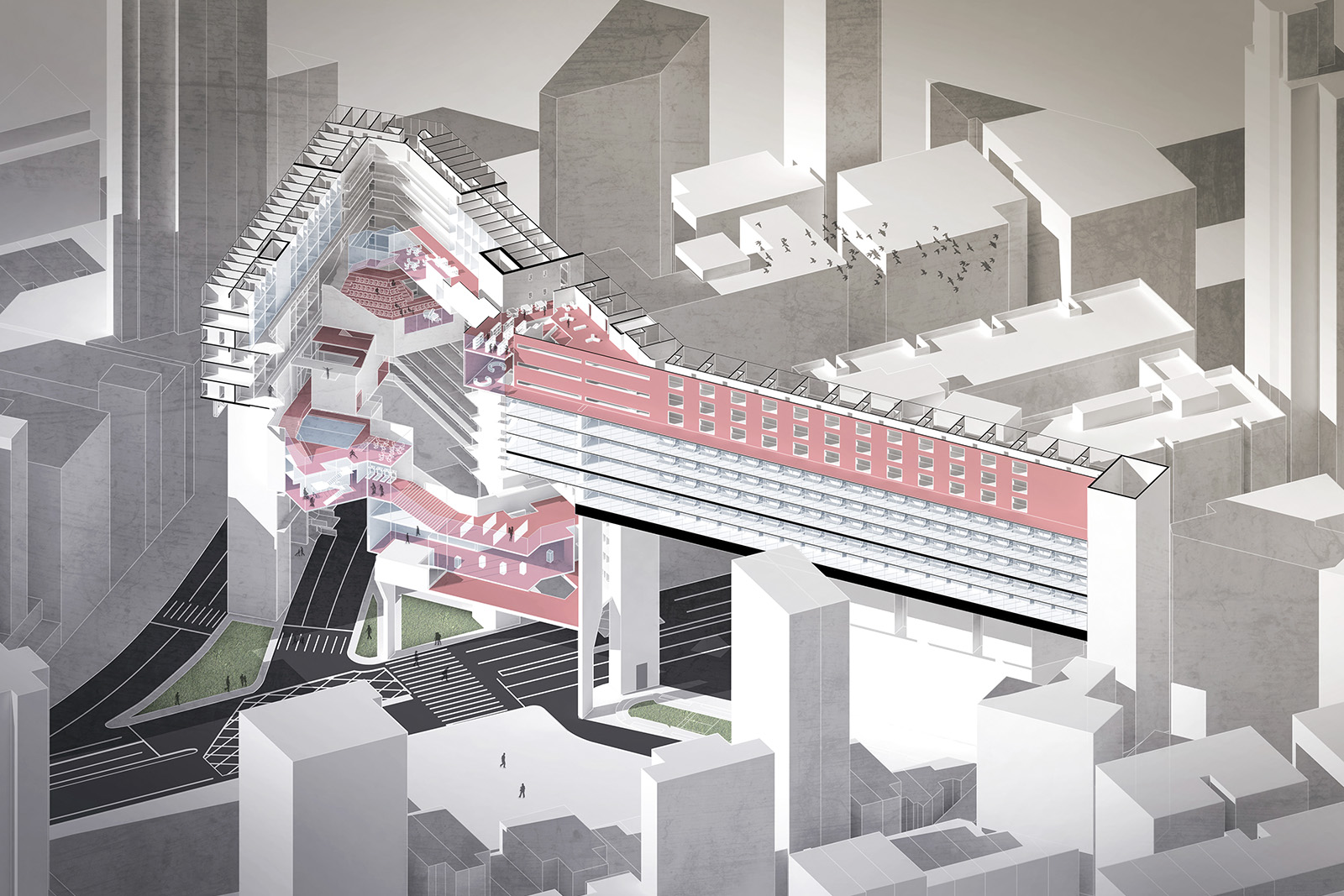
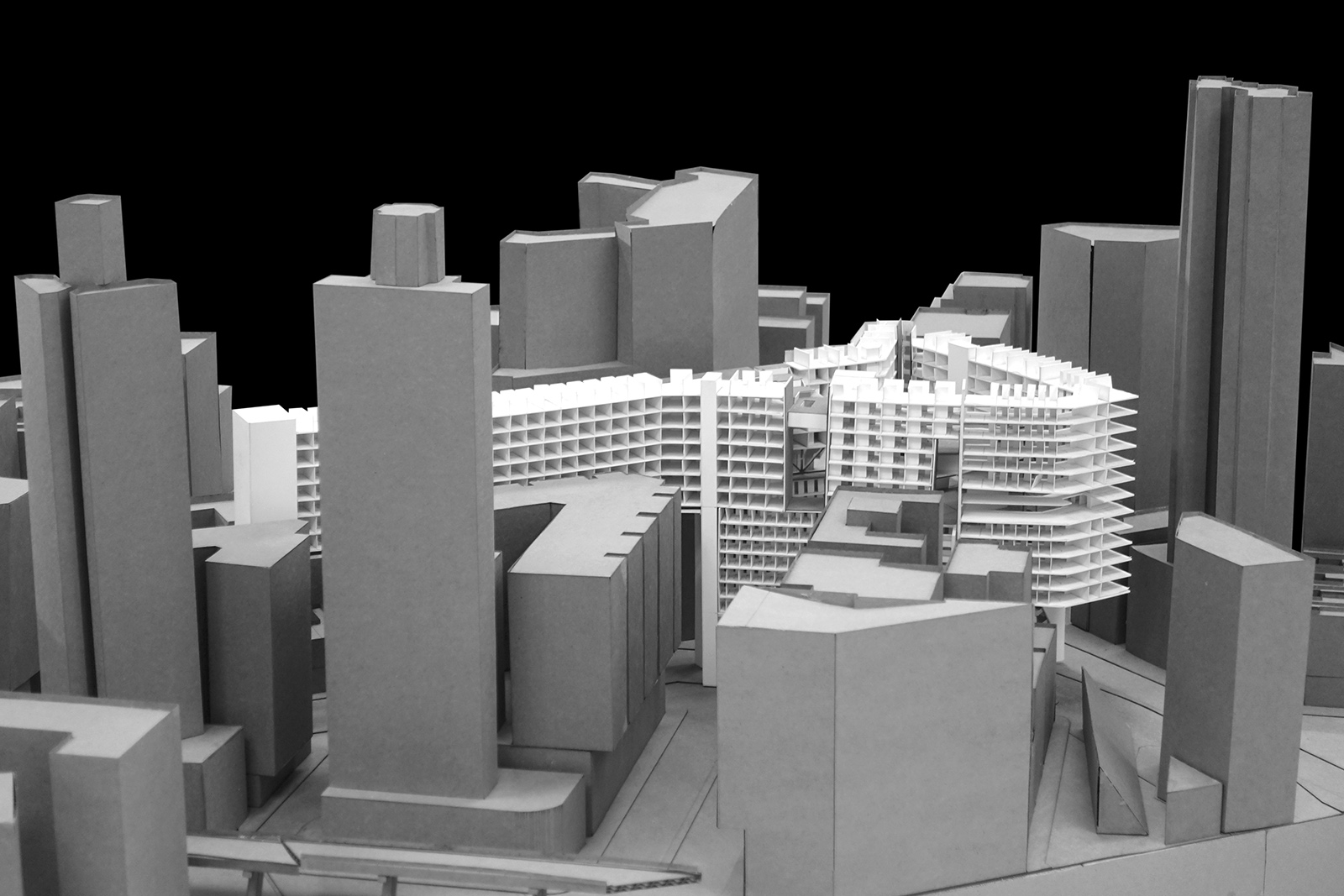
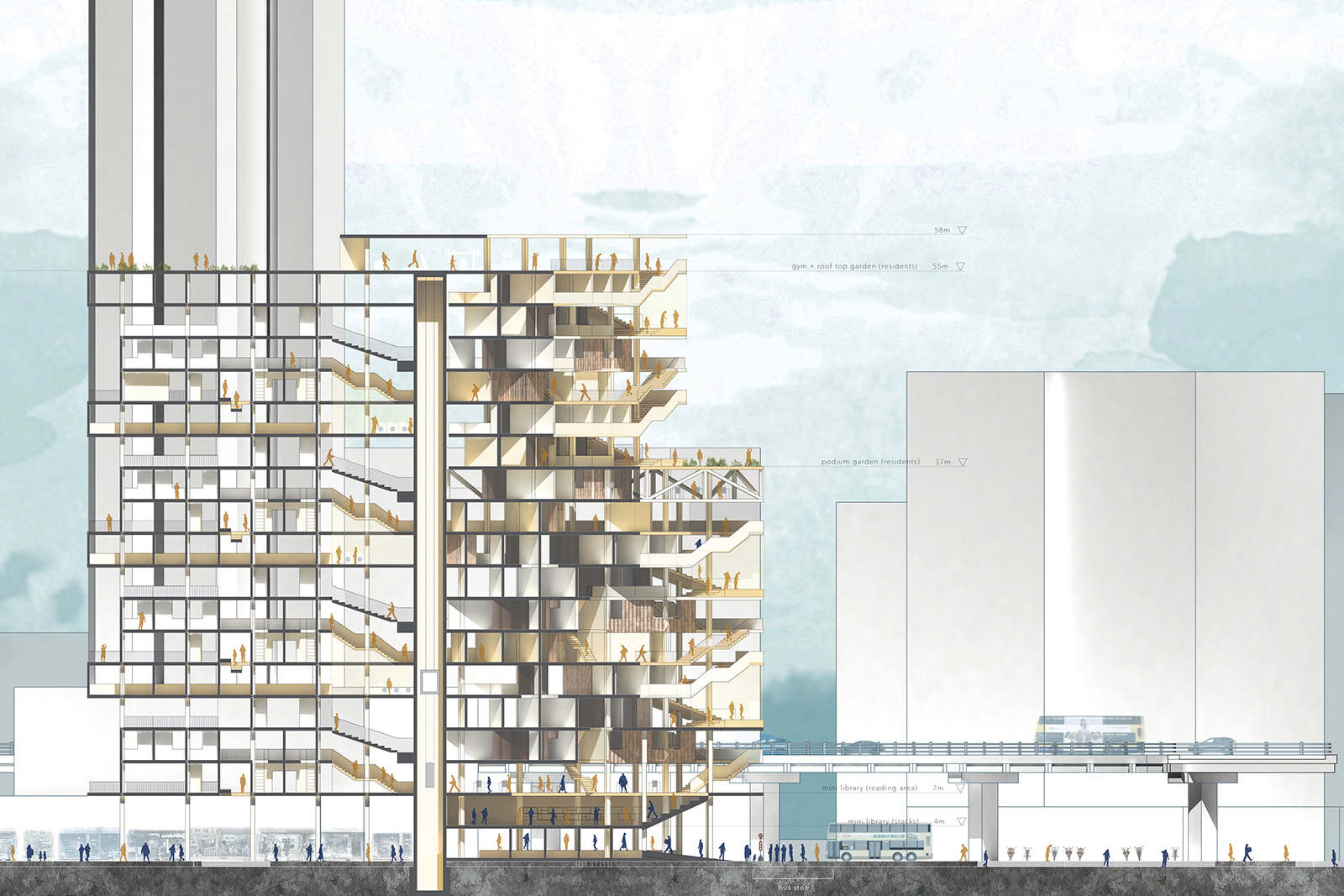
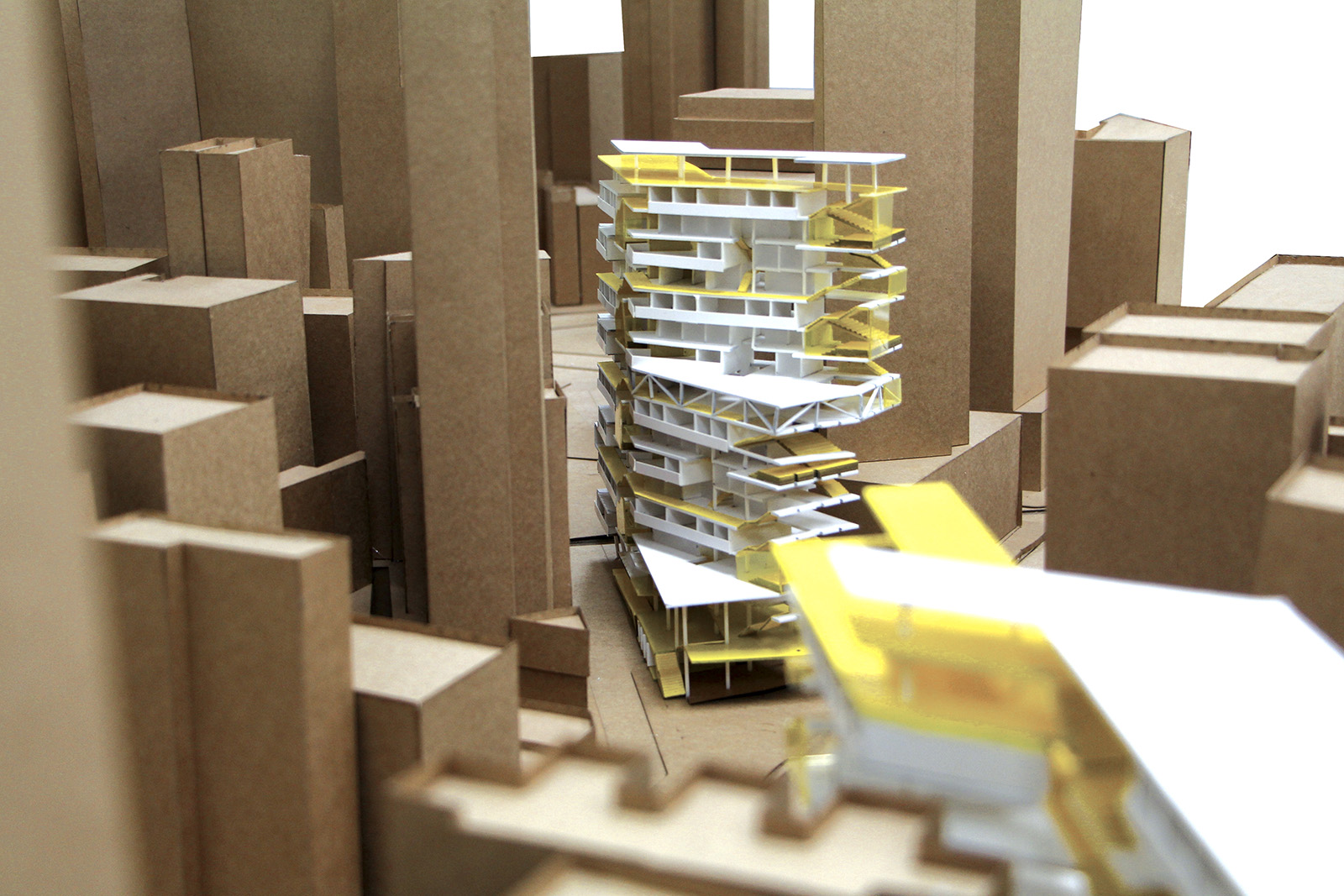
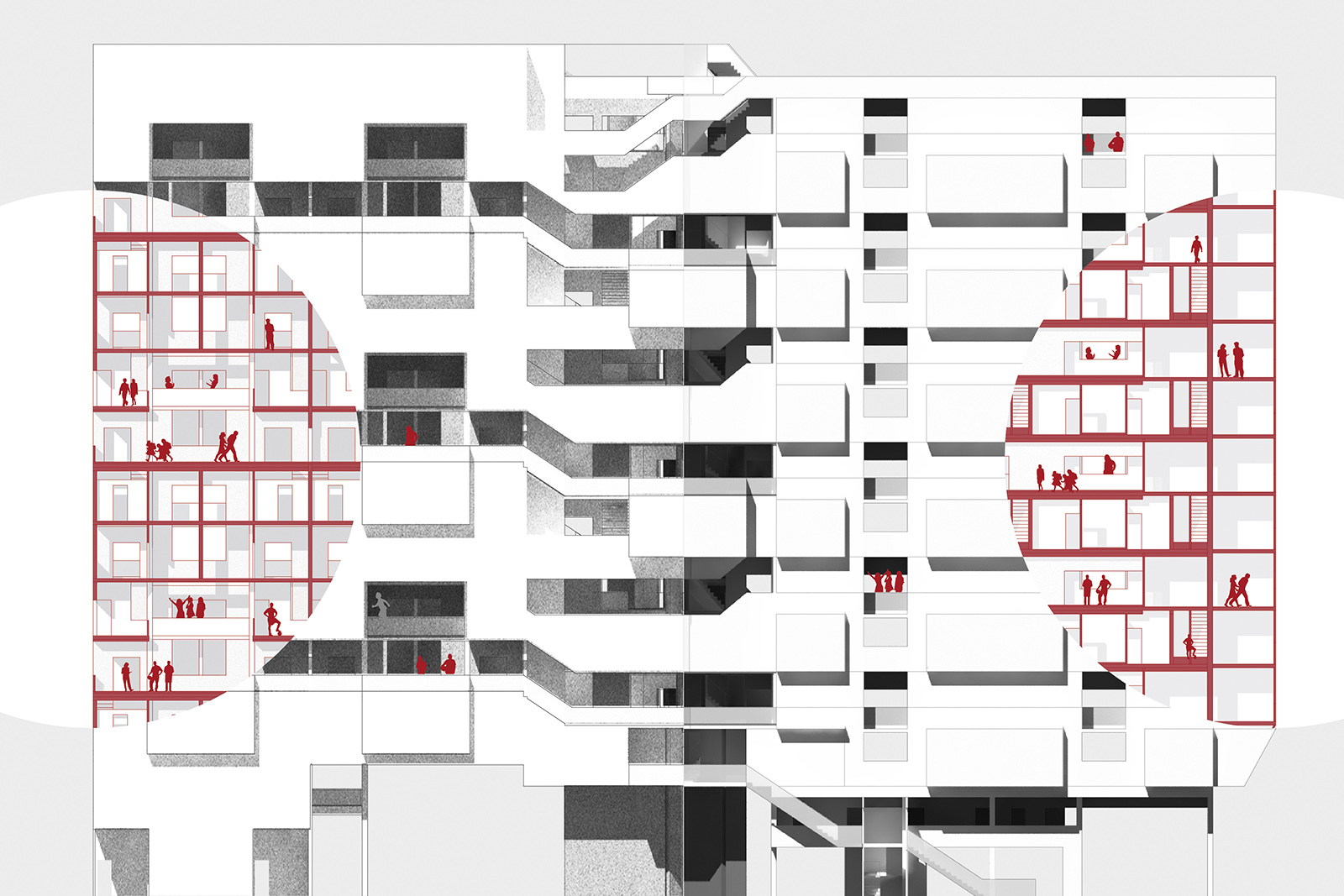
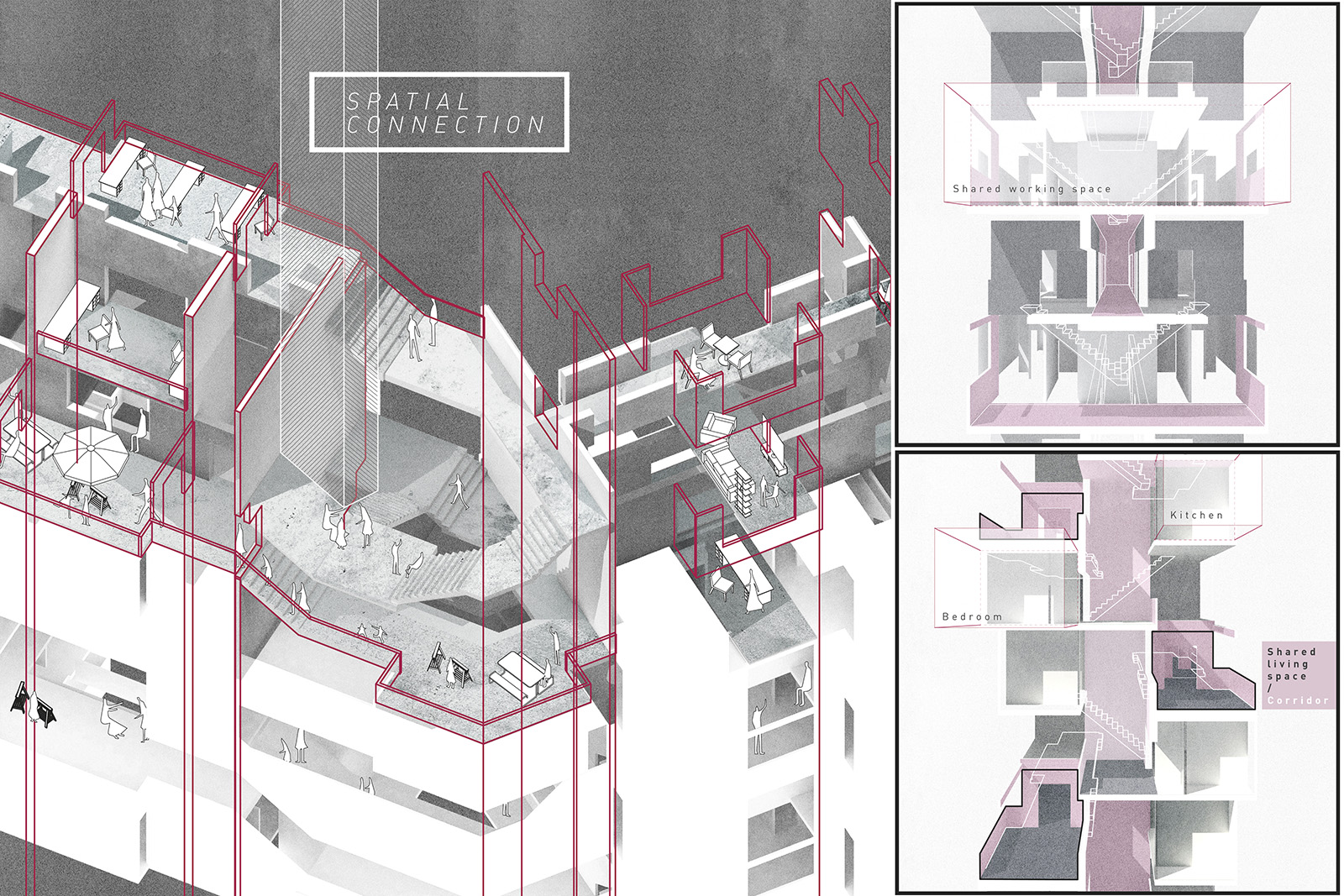
Architecture Design Year 4 Studio 2015-16 Semester 2, HKU
Studio Title Occupy Prince Edward: Affordable Youth Housing in Hong Kong
Image Credits Jacky Huang (01-02), Debby Lam (03-04), Jonathan Pang (05-06)
Urgency for Affordable Youth Housing in Hong Kong
Soaring property prices in the past few years have given Hong Kong the rank No. 1 of “Most Unaffordable Housing” in the world for the fifth straight year, according to a survey of 360 cities by US-based consultancy Demographia. The survey reported that Hong Kong’s median home price was more than HK$4.02 million, while the annual median household income of HK$270,000 was nearly one-15th of the home price. Demographia rated housing affordability in Hong Kong as “severely unaffordable.”
Today buying home is mere fantasy for young people, even renting a place to live is too expensive. “Hong Kong’s young people want to untie the apron strings and live independently. Most cannot do so. Many live in their parents’ homes into their thirties,” said Rosanna Wong, executive director of the Hong Kong Federation of Youth Groups. For those who have to move out of their parents’ homes, the 4-7 square meter subdivided flats appear to be the only choice.
Occupy Prince Edward
The need for affordable youth housing is no doubt one of the urgency for Hong Kong housing issue. Instead of finding new lands in the remote area or converting industrial buildings as proposed by the HKSAR government, this studio aims at the possibility of “occupying” the heart of Hong Kong city with youth housing. During the Occupy Central movement took place in 2014, young people took their risk of violating the law, and raised their voices by occupying the streets with their own bodies. This studio takes the notion of occupancy architecturally and bring forward the presence of young people’s living to the densest area in Hong Kong. The “occupy” action of the youth housing is expected to enable an unconventional proximity among various urban activities and catalyze communication among various social, cultural and age groups.
Following the Occupy Mid-level studio last year, this semester is the second episode of the “Occupy” series. Four sliver sites along Nullah Road at Prince Edward are chosen as the testing grounds. Each student in the studio is required to choose two of the sites and analyze their characteristics, problems and potentials, and propose housing typology, unit mix, spatial configuration and methods of assembly according to his/her own design interest. On each site, students shall propose youth housing with total gross floor area of 6000 – 8000 m2. Public programs, informal gathering spaces, outdoor green space and/or any additional programs shall be proposed according to each individual concept.